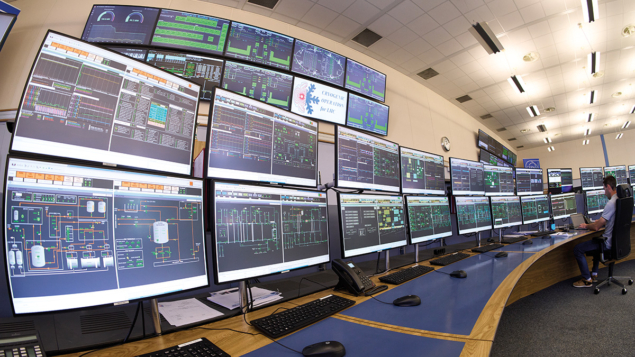The collaboration between CERN and WinCC Open Architecture (WinCC OA) exemplifies the power of strategic partnerships in achieving groundbreaking technological advancements.

This relationship, initiated in 2000, has not only endured but also set a benchmark for managing and evolving complex control systems.
Rigorous selection process
In the late 1990s, CERN undertook an extensive evaluation to choose a SCADA (supervisory control and data acquisition) system for its Large Hadron Collider (LHC) detectors. The process spanned two years and involved 10 person-years of testing and evaluation. Six products were rigorously assessed for functionality, performance, scalability and openness. WinCC OA emerged as the top choice, primarily due to its robust architecture and potential for future development, even though it did not fully meet CERN’s requirements at the time.
Strategic partnership formation
Recognising the need for significant enhancements to WinCC OA, CERN sought more than just a transactional relationship. A symbiotic partnership was formed, focused on mutual growth and adaptation. This collaboration was crucial in ensuring the timely deployment of the LHC detectors in 2009. From the outset, both parties worked closely to evolve WinCC OA to meet the unique demands of the LHC.
Collaboration examples
The first contract for WinCC OA (then known as PVSS2) was signed in 1999, initiating work on scaling the product to meet CERN’s unprecedented requirements. One key area of collaboration was the development of a new UI manager based on Qt, funded by CERN, ensuring compatibility across Linux and Windows while enhancing customisation options. This partnership was vital for the product’s evolution.
Another significant collaboration focused on the archiving system of WinCC OA. CERN required a system capable of storing data from large distributed systems in a central, high-performance database. Over the years, this system evolved through numerous workshops and large-scale tests, ultimately resulting in a substantial performance boost in the Oracle RDB archiver system, delivered on time for the LHC’s launch.
ETM’s (ETM professional control, a Siemens company) sponsorship of the CERN openlab project in 2009 furthered this collaboration, leading to the development of the Next Generation Archiver. This new feature, co-designed with CERN, became a cornerstone of WinCC OA, offering modularity, extendability and support for multiple database technologies. This flexibility allowed CERN to integrate the system into the “O2” physics data flow for the ALICE experiment, providing crucial data for analyses. Ongoing collaboration focuses on advancing the NextGen Archiver’s performance, with promising developments like the TimeScaleDB backend.
CERN’s input has also led to numerous enhancements in WinCC OA, such as improvements to the alarm-summarising engine and the modernisation of the CTRL scripting language. Additionally, the TSPP extension of the S7+ driver was implemented, maximising throughput and enabling precise time-stamped events.
CERN’s innovations, like the WebView widget, have influenced the product’s development, allowing the integration of web technologies within WinCC OA panels. The ongoing collaboration between CERN and ETM is set to continue, with plans to explore web-based interfaces, alternative scripting languages and container orchestration.
Widespread adoption and homogeneity
The success of WinCC OA in managing LHC detectors resulted in its adoption across other CERN systems, including cryogenics, electricity distribution and ventilation. Over time, WinCC OA became the standard SCADA solution at CERN, supporting more than 850 mission-critical applications across its experiments and infrastructure. These applications range from small systems to vast control systems managing millions of hardware IO channels across multiple computers, demonstrating WinCC OA’s scalability and adaptability.
CERN’s development of frameworks like JCOP and UNICOS, based on WinCC OA, has enabled the integration of diverse systems into a vast, homogeneous control environment. These frameworks, centrally maintained by CERN, provide guidelines, conventions and tools for engineering complex control systems, reducing redundancy and maximising the reuse of commonly maintained technologies. This approach has proven efficient, minimising development and maintenance costs while ensuring the integrity of a critical software project despite personnel turnover. The open sourcing of the JCOP and UNICOS frameworks has further strengthened this model, offering a blueprint for other large, complex projects.
A blueprint for future collaborations
WinCC OA’s adoption is growing beyond CERN’s LHC, with other laboratories and experiments, such as GSI and the Neutrino Platform, choosing it as their SCADA solution. Looking ahead, CERN may use WinCC OA for the Future Circular Collider (FCC) project, with feasibility studies already underway. The ongoing CERN ETM partnership demonstrates the power of collaboration in driving technological innovation. By working together, CERN and ETM have not only met the extraordinary demands of the LHC but also continuously evolved WinCC OA to support CERN’s mission-critical applications.
This partnership serves as a model for organisations aiming to implement large-scale, complex systems, underscoring the importance of selecting the right technology and the right partners committed to a shared vision of success.
“We congratulate CERN on 70 years of excellence in particle-physics research and are proud to partner with such an extraordinary organisation. This collaboration continually inspires us to maximise our capabilities and redefine technological boundaries,” Bernhard Reichl, CEO ETM professional control, a Siemens Company.





